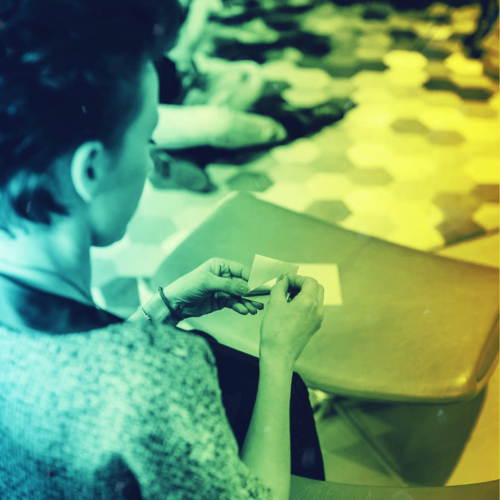
Future Arts School Labs help arts universities anticipate futures: prepare for incoming futures, plan actions to shape futures, consider novelty for the present (Miller, 2018), and take steps to build preferred futures for higher arts education. They are designed for imagining alternative futures, strategic planning, and curriculum development. Futures thinking has the utmost relevance to higher arts education because it helps explicate and understand forces shaping the future development of higher education systems, individual arts universities, arts ecosystems, careers in the arts, communities, and, more generally, society. In increasingly rapid change, growing complexity, and uncertainty, arts universities and their educational programmes benefit from futures thinking. It helps them scan possible future horizons, identify future opportunities, threats, and preferred alternatives, find ways to adapt to change and disrupt instead of being disrupted, and use imagination and arts-based approaches to enrich futures thinking.
We firmly believe that futures thinking and futures workshops such as Future Art School Labs are an integral part of any futures-conscious arts university’s development. To increase the Labs’ impact, we find it more beneficial to integrate them into already existing institutional development processes rather than introducing them independently. The Labs can serve many purposes ranging from needs analysis to educational planning and curriculum development, from rethinking learning spaces to reconsidering the university’s raison d’être and role in society, and from risk assessment to strategy development. The Labs are sites for critical co-reflection. They provide forums to challenge deeply rooted beliefs, attitudes, and assumptions underpinning our views and mindsets, not only about research, teaching, and learning. Also, perspectives on diversity, equality, accessibility, inclusion, sustainability, collaboration, partnerships, and quality in higher arts education can be addressed. More importantly, these Labs are sites of co-creation. For example, they may nurture the emergence of third spaces (Bhabha, 1994), understood here as the cross-pollination of bodies of information and imaginations of respective participants leading optimally to novel and previously unnoticed insights that signify something which bears relevance for the futures of arts universities.
Arts universities belong to higher education systems that are culturally embedded, have particular histories, and change over time (Côté & Picard 2016). These systems’ purposes and roles have varied over history (Kuhnen, 1978; Watson et al., 2011). For example, they ought to provide instruction and bolstering emancipation, serving both individual growth and social progression (Kromydas, 2017; Mokyr, 2002), respond to public needs, inform preferred social change (Shapiro, 2005), and contribute to transformations in higher education (Barnett 2017). In the Anglo-American university system, the very idea of the university (Rothblatt 1997) and universities’ broader role in society (Geiger, 1993) has shifted radically since the mid-twentieth century in tandem with three interconnected changes: massification, vocationalisation, and marketisation of higher education as governments have embraced a neoliberal doctrine (Côté & Picard, 2016). Similar transformations have been taking place in Europe (Fumasoli, 2016; Schulze-Cleven, 2016) regarding questions about autonomy, policy and governance, funding, organizational characteristics, and institutional pluralism in higher education (Bleiklie et. al., 2013).
Despite differences, two fundamental tasks of universities have remained since medieval times: creating and sharing knowledge (Engwall, 2020). Today, these tasks are encapsulated in the university’s three missions: research, teaching, and the ‘third mission.’ The latter has gained increasing attention in the new millennium. That has happened in tandem with the growing need for universities to contribute to regional needs through the technological transfer and business collaboration as well as social and civic engagement concerning, for example, culture, social development, sustainability, policy work, and participation in regional governance (Salomaa et al. 2021).
Arts universities, too, vary and evolve. Some prefer to remain closed inside “the intra-mural world of the studio” (Jonker, 2010, 8). Others engage with society, working “extramurally” (ibid.). Their histories include long and proud traditions, academic safe havens, avant-garde aspirations, and continuous renewals (Jung, 2010). At present, arts universities – as higher education more generally – exist and evolve in an increasingly turbulent VUCA world: a world that is volatile, uncertain, complex, and ambiguous (Bennett & Lemoine, 2014). That includes the growing ideology of neoliberalism in higher education that seriously threatens arts universities (Troiani & Dutson, 2021; Darling, 2021). Under such conditions and without relevant foresight to build on, our educational programs and even entire institutions may fall at risk. Therefore, arts universities need futures consciousness and concrete actions to grasp how different drivers of change can potentially impact the arts, the cultural and creative ecosystems, and the operational environments of higher arts education.
[1] Futures definition
Discussion
No feedback has been added yet
Share a Thought